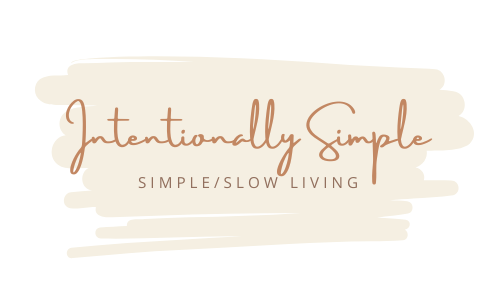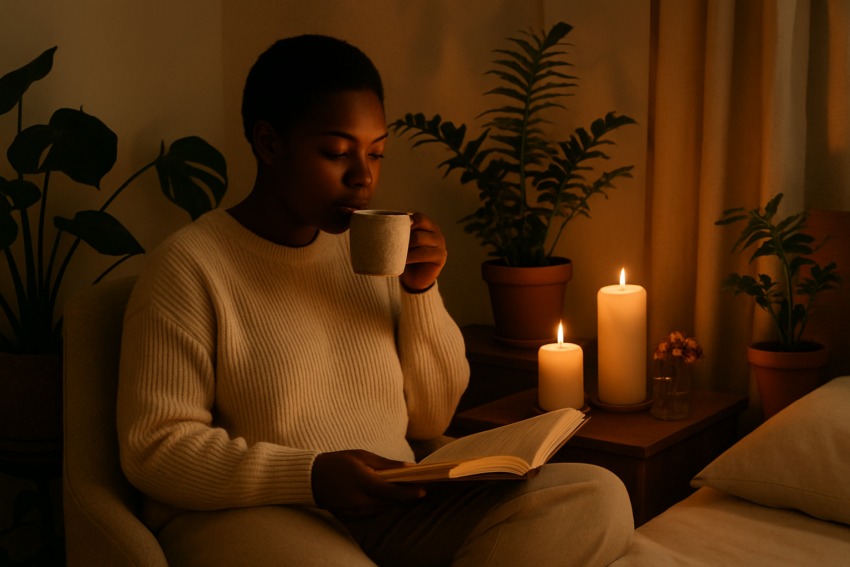It starts the moment the lights dim. I step away from the glow of my phone, pour a cup of chamomile tea, and let the quiet settle around me. In that transition between day and night, I’ve found something sacred—my bedtime ritual. A few small acts that prepare not just my body, but my spirit, for deep rest.
In our overstimulated world, falling asleep has become an uphill battle. The endless scroll, the late-night to-do lists, the rush that never seems to fade—even when the day is done. But sleep isn’t something we can force. We must befriend it. That’s where a bedtime ritual comes in.
For those drawn to slow and simple living, crafting a thoughtful nighttime routine is a gentle rebellion. It’s an invitation to slow down, to be present, and to honor rest as a vital part of life. In this guide, you’ll learn how to create a soothing evening routine rooted in presence, intention, and nourishment—so that rest becomes a rhythm, not a reward.
Setting the Tone: Why Bedtime Rituals Matter
I used to believe that exhaustion alone would carry me into sleep. But I’ve since learned that our bodies and minds need a bridge—a signal that it’s safe to let go. That bridge is our bedtime ritual.
Simple living is about more than minimalism; it’s about presence. Creating a slow, sensory-rich nighttime experience aligns with the principles of intentional living. According to the Sleep Foundation, a consistent evening routine improves sleep quality, reduces stress, and supports mental clarity.
The beauty of a ritual is in its simplicity. You don’t need fancy gadgets or a two-hour spa treatment. A warm bath, a good book, soft lighting, and a few mindful breaths are often enough. The key is consistency and connection—repeating actions that your body begins to recognize as cues for rest.
“Your nighttime routine is not just about falling asleep. It’s about returning to yourself.”
Crafting Your Sensory Sanctuary
Let’s start with the environment. Your bedroom should be a refuge—free of clutter, distractions, and harsh light. This is your sanctuary.
I begin my bedtime ritual by softening the space. I light a candle or turn on a Himalayan salt lamp. I mist my pillow with lavender spray, play soft instrumental music, and let the world fade away.
Creating a calm atmosphere helps activate your parasympathetic nervous system, signaling your body that it’s time to unwind. This is the heart of good sleep hygiene.
Simple additions to your space may include:
- Blackout curtains to keep the room dark
- Essential oils like lavender or cedarwood
- Cozy textures like a weighted blanket or cotton sheets
- A “no tech” zone rule 30–60 minutes before bed
This intentional shift from digital to analog helps separate your sleep environment from the rest of your overstimulated day.
Slow living isn’t about having less—it’s about experiencing more. And the bedroom is the perfect place to start.
Slow living isn’t about having less—it’s about experiencing more. And the bedroom is the perfect place to start.
An effective bedtime ritual nurtures all parts of you—not just your schedule.
Here are some relaxation techniques that you can layer into your routine:
1. Warm Herbal Tea & Mindful Breathing
Sip something calming—chamomile, lemon balm, or rooibos. As you do, practice 4-7-8 breathing or box breathing. These methods help reduce heart rate and induce calm.
2. Journaling
Use a simple gratitude or reflection journal. Ask: What am I letting go of today? What am I grateful for? This clears mental clutter and invites closure to the day.
3. Gentle Movement
A short yin yoga or stretching session can ease physical tension. Just five minutes of focused movement can make a big difference.
4. Read Something Nourishing
Choose a paper book—preferably fiction, poetry, or a gentle essay. Avoid anything work-related or digitally demanding.
By combining tactile, sensory, and emotional care, you’re crafting an evening routine that doesn’t just help you sleep—it helps you live better.
“The slower the ritual, the deeper the rest.”
The Role of Rhythm and Routine
Rituals work best when they become rhythm. Your body thrives on predictability. In fact, circadian rhythm—the internal clock that regulates your sleep-wake cycle—depends on routine.
Going to bed and waking up at the same time daily, even on weekends, improves sleep quality significantly. The more consistent your bedtime ritual, the more your body will respond.
Even on busy nights, aim for a simplified version: dim lights, wash your face, sip tea, breathe. A three-step version of your full ritual can still deliver big benefits.
Pro Tip: If you have children, consider turning this into a shared family ritual. Children thrive on consistency and rituals, too.
Why This Moment Matters
The modern world teaches us to chase productivity, to idolize the hustle, and to treat rest as weakness. But our bodies are wiser than that. Burnout is not a badge of honor. Exhaustion is not a currency.
In the slow living movement, we are re-learning how to honor natural cycles: sunrise and sunset, work and rest, inhale and exhale. And your bedtime ritual is one of the most powerful ways to realign with those rhythms.
Psychologist and author Dr. Saundra Dalton-Smith says that “true rest is not just sleep, but restoration across seven types of rest.” Emotional, sensory, creative, and spiritual rest can all be nurtured through intentional rituals.
If you’ve ever gone to bed tired but wired, you know the feeling of being disconnected from your body’s needs. A mindful bedtime ritual reconnects you. It softens the day. It invites the body to trust again.
This is not indulgent—it’s essential.
In a noisy world, your ritual is a whisper: “You are safe. You can let go.”
Looking Ahead
What would it feel like to make bedtime your favorite time of day?
With just 15–30 minutes of intention, you can create an experience that nourishes every part of you. Whether it’s steeping tea, lighting a candle, or stretching in soft pajamas, these small acts accumulate. They become a practice of care.
Your bedtime ritual doesn’t have to be perfect. It only needs to be yours.
So tonight, choose one simple thing to add. Maybe you read instead of scroll. Maybe you exhale more slowly. Maybe you simply lie still and give thanks.
The journey into sleep is not a race. Let it be a return.
“The slower we move, the deeper we feel. And the deeper we feel, the more alive we become.”


